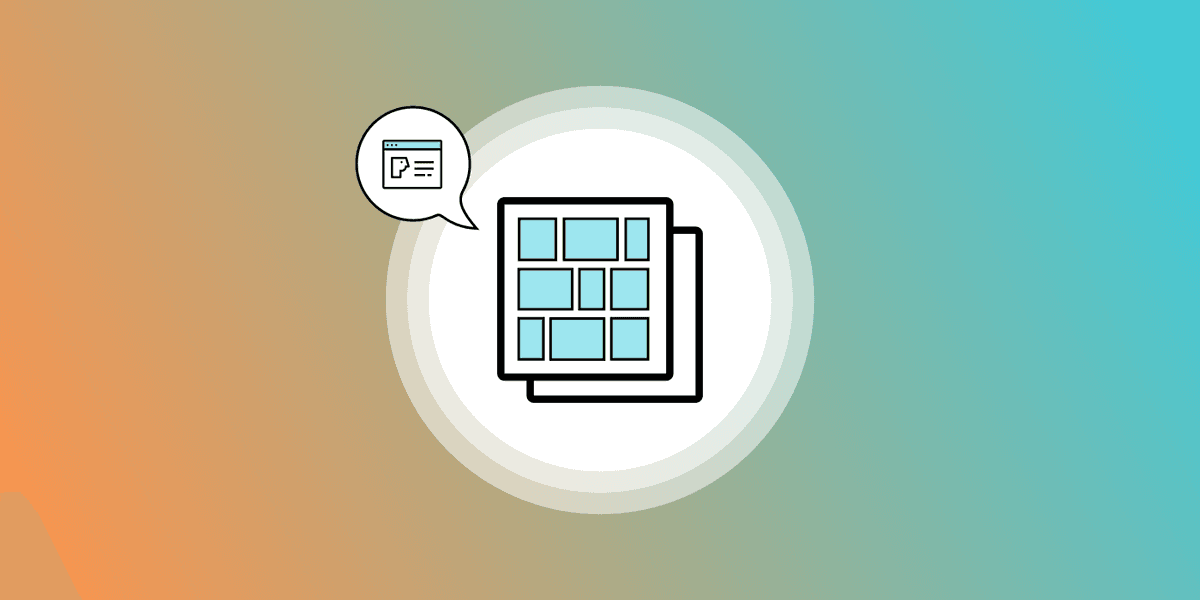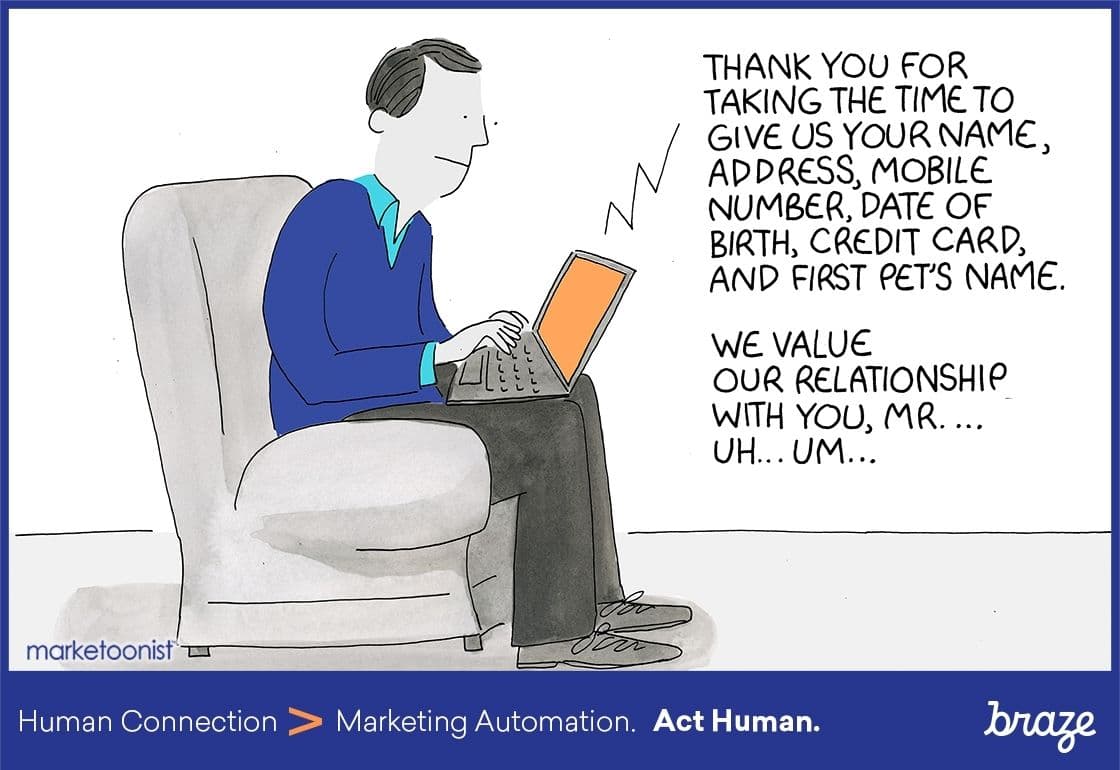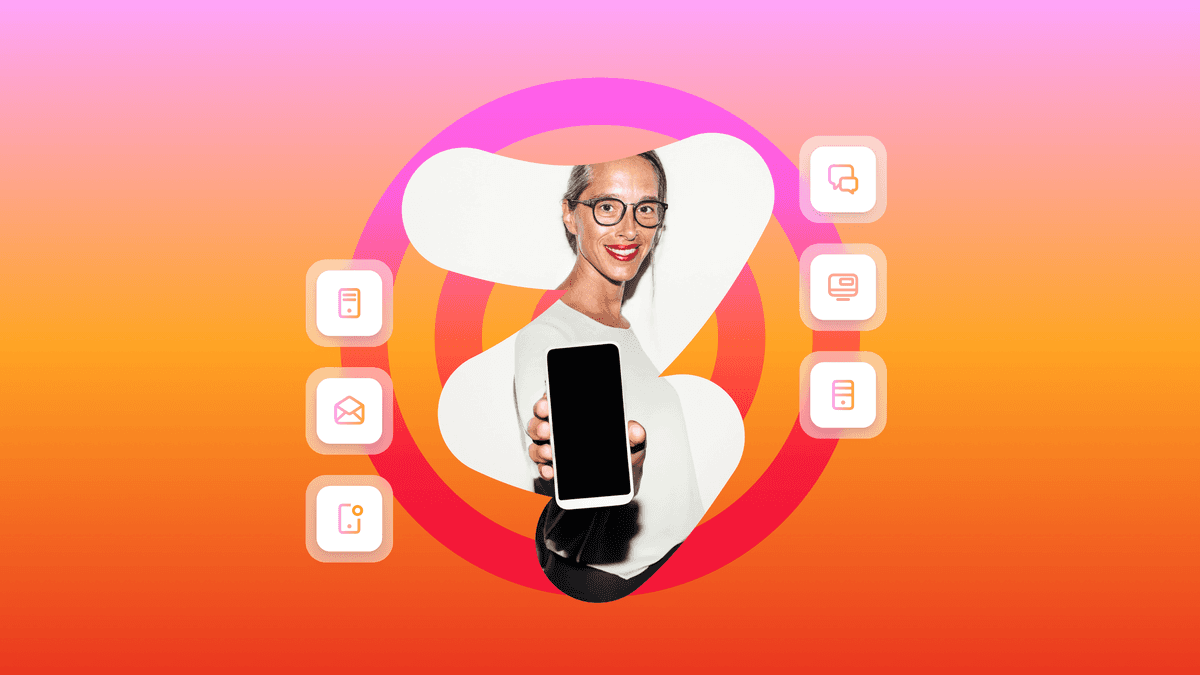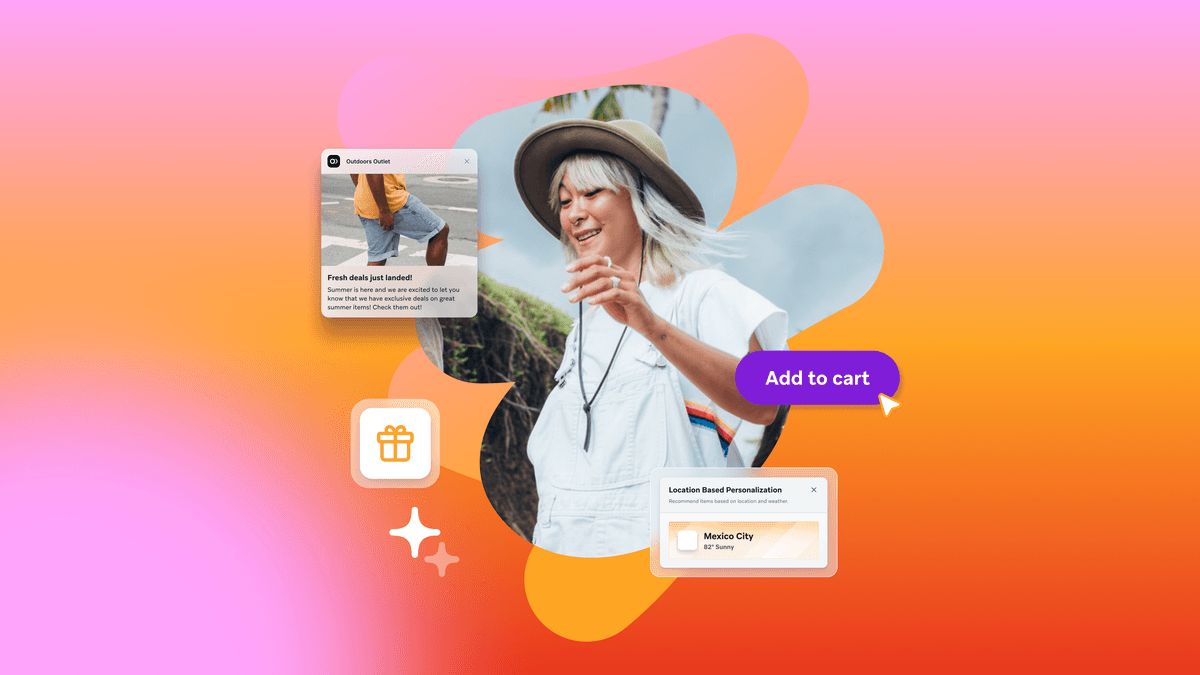Personalization Fails (and How to Prevent Them)
Published on August 21, 2019/Last edited on August 21, 2019/3 min read


Kevin Wang
Chief Product OfficerTo help marketing, growth, and engagement teams see their work from a new perspective, Braze has partnered with Tom Fishburne, CEO and founder of Marketoonist, for a 10-part series of marketing-themed comics.
Each week, we’ll share a Marketoon exploring a different aspect of the customer engagement landscape—and hear a thoughtful response from a Braze employee based on their own experiences and insights.

This week: Braze VP of Product Kevin Wang on how personalization can go wrong.
As a former engineer, I have a lot of empathy for brands when they find themselves in a situation where their customer messages have bugs—for instance, “Hi there, { { first_name } }!” appearing in an email. Computers are notoriously unforgiving: No marketer ever actually intends to mess up a customer message...unless maybe they’re trying to instigate some sort of viral PR stunt.
The most notable mistakes I’ve seen from brands have been subtle—for example, cases where personalization is used to signal an understanding of me that just isn’t accurate, leading them to send messages based on the idea that I’m a coding bootcamp graduate or a massive sitcom fan when I’m not. What makes these cases of mistaken personalization so jarring is that they undercut the customer relationship, revealing to people that your brand doesn’t know them as well as they’d thought. It’s like waking up one day and finding out your best friend doesn’t know your last name.
The best way to prevent this kind of screwup is to take great care to deeply understand your customers (Who are they? What do they care about?) while also ensuring that the data you’re using to inform your product and communications strategies is tightly aligned with your goals. For instance, if you’re going to use personalization to add in customers’ first names, you should make sure that your brand has that kind of close, familiar relationship with your customers. Similarly, if you’re going to recommend content or products, you’d better be damn sure that your recommendations are spot on—or that your customers are open to trying new things, if the suggestions aren’t always perfect.
Braze is built to make it easier to get this sort of thing right. We give you a high degree of flexibility when it comes to configuring exactly how you choose to communicate with your users—so you can create precisely the sort of experiences they crave and avoid the upsetting moments that come with broken brand experiences. Additionally, we put great care into ensuring the Braze can deliver messages quickly, because we’ve found that timely communication is one of the most important aspects of creating a personal experience. Finally, Braze is built with cross-channel messaging in mind so you can use it to reach users on the channels that speak best to each of them, making it easy to deliver great, relevant brand experiences.
Related Tags
Be Absolutely Engaging.™
Sign up for regular updates from Braze.
Related Content
View the Blog
The future of payments: Enhancing innovation and trust in a changing landscape

Erin Bankaitis

Multichannel optimization: Unlocking a more cohesive strategy for engaging customers

Team Braze

Customer engagement must-haves for peak shopping season
